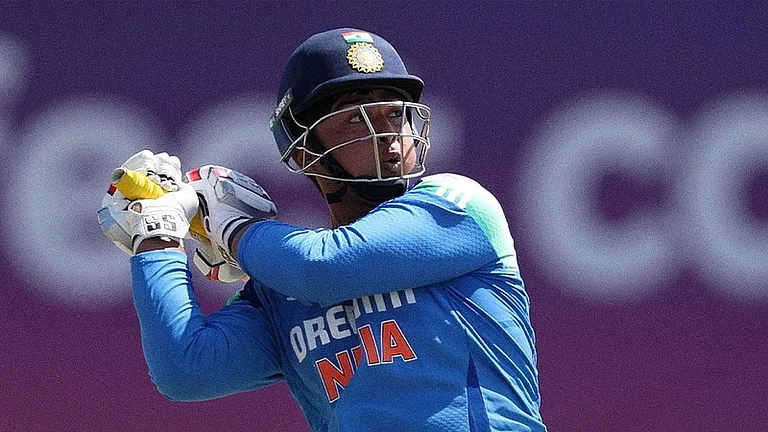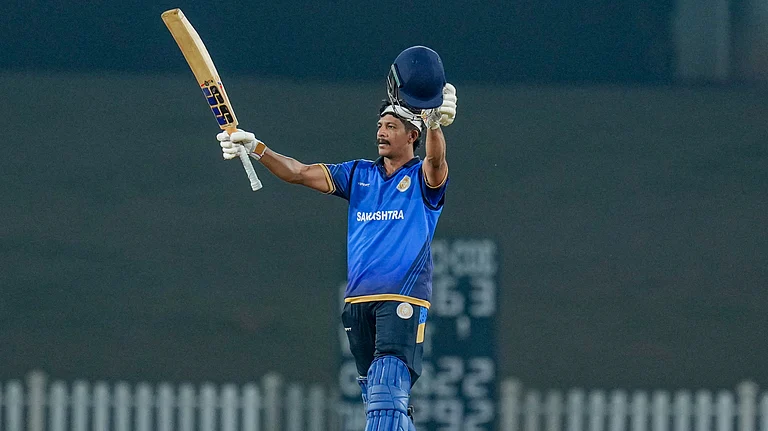I’m finally done. Five years ago, I began writing the story of my great-grandfather V.P. Menon’s life, and the book is now out. And yet, not everything I wanted could fit within its 400-odd pages. In particular, vignettes from the years immediately following independence had to be cut out, partly to avoid overwhelming a reader with detail. This was difficult, because every kingdom on the map of princely India has a story that begs to be told. Writing the tale of integration has been my favourite part—full of politics and princes, of foibles and follies, of scheming dewans and wealth beyond one’s imagination.
The timeline is a long one—three years following independence—and yet, it’s as if everything is happening almost at once. We start exactly seventy-three years ago, in this same season, the cusp of monsoon and autumn.
August 1947
Hyderabad is preparing for rebellion, but nobody knows when or how. Krishna Menon’s spies across Europe and Britain are legion. There are whispers of a Czech agent, known only as ‘Kraal’, who is running arms worth millions of pounds to Hyderabad. The Belgians are rumoured to be doing the same thing, and so are the Italians, but apart from suspicions, Menon can’t find any proof. He asks Nehru to keep this news a secret, but if he really wants to pass it on, he can do so to anyone except V.P. Menon, the brilliant secretary of the Ministry of States. Inexplicably, Krishna Menon gives no reason for this.
But even while Hyderabad simmers, in Baroda, there are other problems—of a more feminine kind. Sita Devi, the spoilt, demanding second wife of the equally spoilt, demanding Gaekwar, is insisting on being given the formal title of ‘Maharani’ in her new passport. Baroda being a monogamous state, her railings are met with outrage. Sir B.L. Mitter, dewan of Baroda, is sanctimoniously incandescent on the subject, fuming to Sardar Patel that if the Government of India acquiesces to Sita Devi’s latest demands, “you will be exalting a loose woman who has broken a happy home”.
Indeed, apart from immense concerns over the troubled states of Junagadh, Hyderabad and Kashmir, Sita Devi’s passport is the most vexed question confronting Baroda and the States Ministry.

Pratap Singh Rao Gaekwad, ruler of Baroda, with his thoroughly spoilt queen, Sita Devi, who demanded ‘Maharani’ be put in her passport.
September 1947
Deep in Central India, it seems as though the Raja of Sarila might well pose another problem. He believes strongly that both Sarila and its brother state, Charkhari, will one day be independent—and ruled by his sons. In fact, he has gone ahead with a coronation ceremony for his elder son as ruler of Charkhari. A telegram is sent post-haste from Delhi. Why has the Raja disobeyed orders? The Raja chooses not to respond. Instead, he comes to see Sardar Patel, to try and explain that this wasn’t a gesture of defiance—but of survival. The Sardar is in no mood to listen, and VP has to step in. “He should have approached us then,” VP explains, “He should not have acted unilaterally.” The Raja apologises. But it is too late. The Sardar walks out of the room.
November 1947
Word comes of a conference in the George V Hotel in Paris. Prince Nicky, youngest and the most dissolute son of the volatile Mir Osman Ali Khan, Nizam of Hyderabad, has held a meeting with a known gun-runner, a devil-may-care Australian by the name of Sidney Cotton. The arms are already in Hyderabad, by way of Karachi. If India does not act fast, Hyderabad may well be lost.
December 1947
VP and the Sardar are planning to begin the integration of the country, in the truest sense of the word. A visit to Cuttack is on the cards. To the north of the country, Kashmir is inflamed. Negotiations with Hyderabad are meeting a dead-end, and the state is seething with violence. And still, Pratap Singh Gaekwar of Baroda is complaining bitterly about the styling of his lady love, Sita Devi, on her official passport. “I have a right to expect the Dominion of India to which I have acceded to exert itself to maintain my prestige and honour…. It is a trifle so far as the Dominion is concerned…. I have been feeling this as a personal indignity imposed by the late regime….”
June 1948
Hyderabad has continued to simmer through the first year of India’s independence. In the summer of 1948, Nehru is a worried man. The Nizam is making no secret of the fact that he is determined to stay independent. The latest intelligence reports inform Nehru that Hyderabad is keeping squadrons of fighter planes at the ready. “Our information is that some bomber planes are kept in East Bengal, some in Western Pakistan, a squadron in Basra and a squadron in Persia. The air crews are usually Poles or Czechs.”
1947 to 1949
Kolhapur is restive. It has never been an easy state to handle, rife as it is with caste and communal tensions. To integrate it right away would be folly, and it is possibly just as well that the States Ministry is of this belief, particularly since the Maharaja (“this idiot”, in B.L. Mitter’s elegant description) doesn’t really want to sign the Instrument of Accession just now anyway. In fact, it is Mitter’s belief—as he writes crossly to Sardar Patel in July 1947, weeks before independence—that the Maharaja doesn’t even know what accession would mean. Intelligence reports coming in from the state tell VP and the Sardar that the Maharaja is holding secret anti-merger meetings and fanning all kinds of anti-government propaganda. It is not just the Maharaja’s schemes that give VP and the Sardar pause. Kolhapur is beginning to simmer with communal violence—and this, following the assassination of Mahatma Gandhi in 1948, will only begin to get worse.

Schemer till last Maharaja of Kolhapur Shahaji II, who held secret anti-merger meetings amid communal tension.
The news from Baroda is hardly reassuring. Even as Patel and VP move to establish some kind of stable local government in the state, Pratap Singh Gaekwar seems determined to make things difficult. He refuses to respond to the Sardar’s summons, vanishing to Europe instead. Sita Devi continues to plague the Ministry of States, quietly having some of Baroda’s best and finest pieces of jewellery exported out to France or America. She is already fondly known to Van Cleef & Arpels as ‘Mrs Brown’, and there is nothing she loves more than being photographed at European society’s best parties in the famous Baroda rubies and pearls. She lives in regal splendour in Monaco, and insists on being chauffeured around in a custom-made Rolls Royce, with the Baroda coat of arms. She is scandal personified. By 1949, the Ministry of States will estimate that nearly six crores of rupees have been withdrawn from Baroda’s treasury, along with nearly 300 heavy jewellery sets and two of the state’s priceless and legendary pearl carpets.
1949 to 1950
Hyderabad will no longer trouble India. The only question that remains to be resolved is that of the Nizam’s immense wealth. From 1949, discussions begin. J.N. Chaudhuri, military governor of Hyderabad, assures the Nizam that if he gives the Government of India a list of his assets, they would always be protected under the laws. In January 1950, a full year later, V.P. Menon arrives in Hyderabad, to sign a treaty with the Nizam, on behalf of the Government of India. The treaty is comprehensive, and states quite explicitly that the Constitution of India will now apply to Hyderabad. Apart from that, VP has laid down the rights, privileges (of gaddi and privy purse) and dignities that will be accorded to the Nizam in free India, while guaranteeing him the rights of succession according to the laws of Hyderabad. The treaty, in full, with VP’s signature, exists still within the pages of N. Gopalaswami Ayyengar’s private papers, housed today within the Nehru Memorial Museum & Library in New Delhi.
Note: These are only a handful of vignettes from the integration of the Indian states, and serve (or should serve!) to highlight, yet again, just what a monumental task it was for Sardar Patel and V.P. Menon to put together the jigsaw puzzle of independent India.
Narayani Basu, A historian and foreign policy analyst,is the great-granddaughter of Vappala Pangunni Menon






















